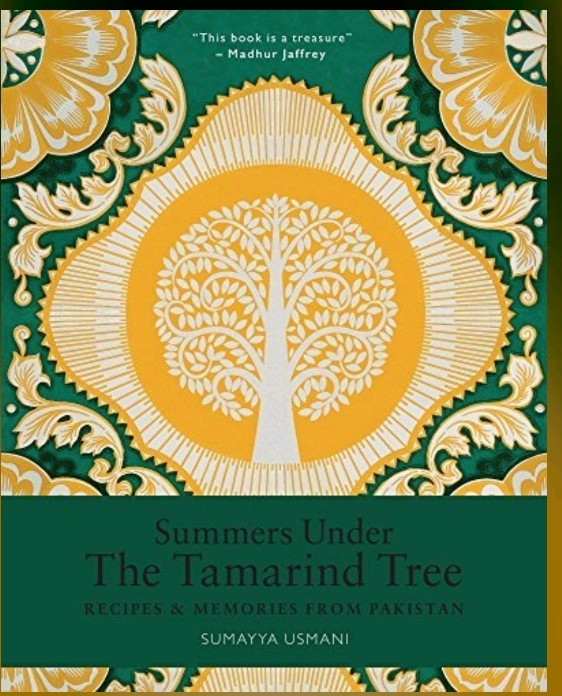Title: Summers Under the Tamarind Tree
Author: Sumayya Usmani
Publisher: White Lion Publishing
Pages: 223
My GoodReads Rating: ⭐⭐⭐
Summers Under the Tamarind Tree is a book
that you need to get yourself, particularly if you like what is popularly known
as ‘desi’ or Indian cooking.
The first thing that caught my
eye were the pictures in this book. They captured vignettes of life in Pakistan
in glorious colour. They were a reminder of how similar our two nations are and
of the common roots we share. They included generic images of life in Pakistan
as also family pictures.
Beginning with a bit of family
history, the author quickly shifts to talking about the methods of cooking that
elevate a dish, and then to sharing the recipes of the dishes that graced her
own table.
The author talks about
traditional methods of cooking like bhunai, tadka, dum, dhuri (smoking). The
latter is guaranteed to raise the flavour of a dish by many notches. Andaza as
a way to navigate cooking is commonplace across the Indian subcontinent.
The book is directed at a
Western audience and reminds them to learn to play with spice, something cooks
and aficionados of the cuisine of the Indian subcontinent know instinctively.
Such readers have much to learn from the chapters on spice blends.
The dishes include cholay ka
salan (chickpea curry with tomatoes), aloo ki bhujia (spicy potatoes with
nigella seeds and fenugreek), khagina (spicy scrambled egg with tomatoes and
coriander—in India we call this dish bhurji), sweet semolina halva (with pistachio
and rose water) and sabudana kheer (tapioca pearls with coconut and pistachio
dust). As far as I was concerned, it read like the description of our staples
and favourites.
Then there was bhutta (barbecued
corn with chilli and lime), Hyderabadi-style samosas (filled with red onion
mint and green chilli), spiced lentil bun kebabs—dishes whose flavours I can
endorse from my experience this side of the fence.
There were other delicious
dishes that one could have as treats. These included apple pakoras spiced with
chaat masala, dahi vadas, shakarkandi (baked sweet potato with chaat masala).
But some things were new to me.
The onomatopoeic sounding kat-a-kat (stir-fried and steamed chicken liver and
kidneys) and sweet potato and squash parathas.
The bread staples included
tandoori roti, naan, puris and makkai ki roti.
The rice recipes included
khichdi and mutton pulao, attock chana rijai (minus the chana, this is the
brown rice made by our Parsi community), Afghani lamb pulao, saffron rice,
meatball and beef pulao.
The meat dishes included
coal-smoked Bihari beef kababs, Railway mutton curry, coal smoked lamb keema,
Peshawari namkeen gosht, Punjabi aloo gosht, attock chapli kabab, lamb karahi
with fennel and coriander, mutton chops. Rose garam masala and Hunter beef were
new to me.
The chicken delicacies included
Baluchi-style chicken sajji, masaledar batair (spicy stir-friend quail), karahi
ginger chicken, Karachi-style chicken tikka, Lahori chargha, chicken makhni
handi (with coconut milk and fenugreek), Lahori murgh chholey (chickpea and
chicken curry).
I can only imagine how fantastic
the flavours of all these dishes would be,
My only grouse was that the book
should have been proofread better. Not that you’d notice.
This was one book whose photos
alone should make your mouth water. It deserves a place on your kitchen
bookshelf.
(I read this book on NetGalley. Thank you to the author, the publisher and NetGalley.)

No comments:
Post a Comment